Human-wildlife conflict is a shockingly common problem, often with enormous consequences for both individual animals and entire populations.
When human-wildlife conflict comes to mind, you may immediately think of wildlife crime instead - which isn't wrong, since many regions with wildlife crime problems like poaching are also areas where people may frequently deal with human-wildlife conflict, causing the two issues to go hand-in-hand. But human-wildlife conflict is a much broader issue encompassing many ways that human presence and interference can cause problems for us and animals alike. Human-wildlife conflict includes:
- Elephants trampling a farmer's crops, resulting in retaliation
- New real estate developments infringing on ecosystems where predator species live, leading to predators having less territory and less food, which in turn leads to predators attacking domestic animals and livestock
- Freeways dividing the territory of animals like mountain lions, leading to wildlife venturing into neighborhoods or being killed by cars
- Lead bullets used in hunting causing scavengers like condors to die of lead poisoning
These are just a few examples of how humans can negatively impact wildlife, and it's clear to see how many of these scenarios could escalate. Human-wildlife conflict solutions don't just include ways in which we can prevent these issues (for example, through tracking predators, monitoring populations' territories, or building barriers and wildlife crossings monitored by sensors), but also the ways in which we can help people connect with wildlife and care about learning to live alongside them.
If you're interested in solutions that can prevent human-wildlife conflict, join this group and get to know the people who are working to protect and save species around the world!
Header image: Casey Allen on Unsplash
- @valengsb
- | she / her
GIS specialist for Audubon Americas | Biologist with an emphasis on Conservation and Sustainable Development | Innovative approaches in the study and monitoring of biodiversity for possible, biodiverse, and just futures.
- 0 Resources
- 0 Discussions
- 18 Groups
Michigan State University
Conservation Criminologist
- 0 Resources
- 2 Discussions
- 7 Groups
- @CDean
- | she/her
Grad Student, UW-Stout, Beaver habitat biodiversity research, process based restoration
- 0 Resources
- 7 Discussions
- 6 Groups
- @JakobWiren
- | He,him
Swedish soon-to-be graduate engineer in AI/ML and robotics. Writing my master thesis in using decision trees for anti-poaching in Limpopo, South Africa. Am passionate about conservation, AI and travelling. Help me find a way to help you!
- 0 Resources
- 1 Discussions
- 13 Groups
- @Freaklabs
- | He/Him
Freaklabs
I'm an engineer and product designer working on wildlife conservation technology.



- 0 Resources
- 302 Discussions
- 20 Groups
- @Sairaakber
- | Saira
I am an experienced ecologist and wildlife conservationist dedicated to preserving biodiversity. With expertise in wildlife conservation research, I lead projects to protect endangered species and restore ecosystems. I advocate for conservation policies & sustainable solutions.
- 0 Resources
- 0 Discussions
- 4 Groups
- @UrsusAmer66
- | He/Him
Research Ecologist focused on human disturbance and ecophysiology
- 0 Resources
- 0 Discussions
- 5 Groups
Noé
Hi! I am Aurélie, a dedicated French ornithologist and engineer specialized in conservation technologies. I am currently Program manager for the biodiversity of natural habitats' program in a French NGO called Noé.

- 0 Resources
- 1 Discussions
- 5 Groups
Gui
- 0 Resources
- 0 Discussions
- 7 Groups
Ol Pejeta Conservancy
Endeavoring to implement tech solutions for conservation.



- 0 Resources
- 18 Discussions
- 11 Groups
- @ppebs
- | she/her
Primatologist who studies human-primate coexistence and self-medicative behavior in non-human primates
- 0 Resources
- 1 Discussions
- 7 Groups
- 0 Resources
- 0 Discussions
- 9 Groups
A Post-Doc position is available to join the team coordinating the Urban Exploration Project – a collaborative initiative in partnership between the University of St. Andrews and the National Geographic Society.
2 May 2025
This project aimed to reduce human-carnivore conflict by building a resilient boma for a vulnerable family in Hunyari village. It served as a model for other families, promoting stronger livestock protection. The...
17 April 2025
WWF's Arctic Community Wildlife Grants program supports conservation, stewardship, and research initiatives that focus on coastal Arctic ecology, community sustainability, and priority Arctic wildlife, including polar...
7 March 2025
The worst thing a new conservation technology can do is become another maintenance burden on already stretched field teams. This meant Instant Detect 2.0 had to work perfectly from day 1. In this update, Sam Seccombe...
28 January 2025
The Zoological Society of London's Instant Detect 2.0 is the world's first affordable satellite connected camera trap system designed by conservationists, for conservationists. In this update, Sam Seccombe describes the...
21 January 2025
Wildlife on roads creates a significant hazard in rural areas, to humans and animals alike. Low-tech prevention methods such as overpasses give great results, but they are expensive and can’t cover every scenario. Now...
12 November 2024
Very nice video!
7 October 2024
The Connected Conservation is thrilled to announce our award's third round in collaboration with the Airbus Foundation. This award champions the use of cutting-edge satellite imagery to tackle biodiversity loss and...
30 September 2024
The Human-Wildlife Initiative operates in three areas, viz. France's Provence-Alpes-Côte d’Azur ( PACA ) region, French-speaking Switzerland and Spain. Each has it's own call with it's own specifics.
11 September 2024
Wildlife Letters is announcing a call for papers on managing human-wildlife conflict in big cats
22 August 2024
Join us in celebrating this year’s Judging Panele Award winners!
19 August 2024
Join us in celebrating this year’s Community Choice Award winners!
15 August 2024
June 2025
event
July 2025
October 2025
event
September 2024
event
32 Products
3 R&D Projects
40 Organisations
Recently updated products
Recently updated R&D Projects
Recently updated organisations
| Description | Activity | Replies | Groups | Updated |
|---|---|---|---|---|
| The European project Nature FIRST is hosting its final conference at Ouwehands Dierenpark in the Netherlands on 25–26 June 2025,... |
|
Community Base, Conservation Tech Training and Education, Data management and processing tools, Earth Observation 101 Community, Emerging Tech, Human-Wildlife Conflict, Protected Area Management Tools, Wildlife Crime | 5 hours 48 minutes ago | |
| Hi. Currently working on a project on an island where recreational activity is impacting breeding seabirds. Looking for AI solutions for... |
|
Human-Wildlife Conflict | 4 days 3 hours ago | |
| Wonderful video! Really impressive :) |
|
Animal Movement, Human-Wildlife Conflict, Latin America Community | 3 months 2 weeks ago | |
| Great dear Travis,This is a great news and an opportunity to me and my local bee keepers. It really sounds very helpful.Here is my contacts:Email: muganyizi@pales.or.tz ... |
|
Climate Change, Conservation Tech Training and Education, East Africa Community, Funding and Finance, Human-Wildlife Conflict, Wildlife Crime | 1 month 2 weeks ago | |
| Good morning JocelynThank you very much for your comment, this is proving to be very useful advice and thank you so much for setting me on the right path!! This is very exciting!!... |
|
Animal Movement, Citizen Science, Human-Wildlife Conflict, Marine Conservation, Drones, Community Base, Geospatial | 1 month 4 weeks ago | |
| Hi Nikita, If you haven't already, I'd recommend reaching out to the folks at the Cornell Ornithology lab. They're really glued into all things bird. In particular, I... |
|
Animal Movement, Drones, Emerging Tech, Human-Wildlife Conflict | 2 months ago | |
| I'm sure others here can comment better than I on models for classifying animal sounds, but from an ML pint of view, a key concern is getting enough data. 10 recordings does not... |
|
AI for Conservation, Animal Movement, Human-Wildlife Conflict | 2 months ago | |
| Love it! I have a few ideas. |
+15
|
Conservation Tech Training and Education, Funding and Finance, Human-Wildlife Conflict | 3 months 1 week ago | |
| Hello everyone. My name is Bilal. I recently graduated with a degree in bioengineering and hold a bachelor's degree in computer science,... |
|
AI for Conservation, Animal Movement, Human-Wildlife Conflict, Marine Conservation | 4 months ago | |
| @HeinrichS there’s still time for you or anyone else to make a funding submission to the wildlabs 2025 grants ❤️❤️❤️I haven't applied for wildlabs funding, but I would love for... |
|
Human-Wildlife Conflict, AI for Conservation, Camera Traps, Emerging Tech | 4 months 1 week ago | |
| Hats off to your team for this absolute game-changing technology! We rescue stray and wild animals in Taiwan, and the bulk of our work is saving animals maimed by wire snares... |
+37
|
AI for Conservation, Drones, Emerging Tech, Human-Wildlife Conflict, Wildlife Crime | 6 months ago | |
| There's quite a few diy or prototype solutions described online and in literature - but it seems none of these have made it to market yet as generally available fully usable... |
|
AI for Conservation, Camera Traps, Human-Wildlife Conflict, Sensors | 6 months ago |
International Workshop on Animal Movement Ecology & Human Mobility
22 July 2022 7:25pm
CERES TAG
22 July 2022 3:36am
Hello there
1 July 2022 5:00pm
Temporarily marking of polar bears entering villages
27 November 2019 1:49pm
3 June 2022 2:49pm
Hi Femke, did you get any responses to this question? If so I would be interested in hearing what came up.
Long ago I was trapping small mammals and we would use picric acid (fluorescent yellow) to dye the hair on the bellies of mice and voles. It is a bit explosive esp if it drys out but we never had any issues of that sort. Maybe there is a safe and stable form that could be deployed via paint gun - I seem to recall that the Polar Bear Alert Team in Churchill Manitoba tested paintballs on polar bears but not sure of the results.
Stephen
17 June 2022 8:09pm
Hi @Femke_Hilderink , long time no speak!
What an interesting problem/project!
Does it have to be paint, as there was this project a while back:
Error 404 | 3M News Center
" /> <meta name=
I don't know how it's going, but am really interested to hear anything...
If something like paint is preferable, maybe drones delivering it could work? I am super interested in using drones to drop tracking tags onto animals, and polar bears are big enough targets to give this a rip snorting go! Happy to discuss.
I had a colleague that used food dye to temporarily colour Australian ibis at refuse sites. If memory serves they trialled sprinklers and super soakers for delivery with some success. I can try and dig up more information if you like?
Or could their foot pads be painted, as maybe they could 'pick up the paint' by walking over an area with paint on the ground? That way their coats are left relatively untouched...
Looking forward to hearing other ideas!
Cheers,
Rob
International Platform to exchange knowledge and experiences about solutions/initiatives on Human-Wildlife conflict issues
31 January 2022 11:31am
31 January 2022 11:32am
Why this collaboration platform? What entails to become ENCOSH member?
Tackling human-wildlife coexistence issues requires an holistic approach with various initiatives/measures/strategies. Many of these have been tested in various places over the world by various stakeholders. But there is a lack of sharing these initiatives across the world. Besides, many could be adapted in various context and for different animal species. It is like a big puzzle with all pieces out there but spread out.
This is why this collaborative platform was created to gather all extant initiatives/measures/strategies and multi-stakeholders involved in these "solutions" to share their knowledge and experiences so that everyone can learn from each other and better tackling such issues locally.
Any user who registers on the platform becomes members, the only engagement is to accept the privacy policy and terms & conditions. Members can have access to all the platform features. They can also share their own initiatives/measures (not a whole project) if they want to contribute. This will create technical sheets that our team will first review before sharing on the platform and will be then available to all and downloadable in many languages for use in different countries and on the field.
Tech, Evidence and Financial Compensation for livestock losses due to predators
13 November 2020 4:03pm
20 November 2020 7:47pm
Chavoux....
BRILLIANT!
Regarding collaring, I am developing collars for livestock, not for Jaguars. BCB detects Jaguars using Smart Cameras (smart fences are on the plans as well) and that information is inside livestock collars, so you can get early alerts if domestic animals are in dangerous zones (people here release their animals for feeding, etc). If no Smart cameras are present, you can tag the areas manually if you have the evidence from camera trapping or inhabitants (I developed simple panic buttons as a way to engage local inhabitants). I was about to test all this however the pandemic imposed trip restrictions since the early days of March!
That's regarding tech. Your views on the human side are really interesting, I will talk about this soon with Conicet Researchers, I guess more synchronization with NGOs are needed, there are a lot of political things in the middle however, this sounds quite good to me: "predator friendly meat" brand, if you want, please drop me an email at dnna.cgm11@gmail.com so I can get yours or subscribe to the BCB's site (The site is to try to encourage other people to use tech and talk about the Jaguar situation here, it is not for fundraising)
There are some simple things that can be done to make a huge difference, tech is only an enabler in my opinion. I collected a few tips also here (not mine, I'm a tech guy but I liked the drawings, they were made with love for Jaguars!)
www.wildedge.info/jaguarcampaigni
Warm regards Chavoux! I hope other people will read your words as well!
10 November 2021 2:02pm
Hello Carlos and Chavoux,
Interesting exchange, thank you! Working on HWC, boh locally on Human-Jaguar coexistence in French Guyana and globally through the ENCOSH platform, it would great to learn more from your initiatives and experiences!
An opportunity to do so is to join us and contribute to the ENCOSH platform: https://encosh.org/en/
It is a recent international collaborative platform to promote the exchange of knowledge, experiences and ideas among all stakeholders worldwide to better tackling Human-Wildlife coexistence issues. A forum will be very soon included also.
Your contribution would be meaningful by submitting some of your initiatives to this community. Besides, you could find and make comments on a list of almost 100 extant initiatives used to enhance Human-Wildlife interactions worldwide.
I remain available if you need further information or guidance.
All the best
Tommy Gaillard
3 December 2021 5:12pm
This is an awesome thread and very enlightening. Thank you! I started reading this as Oregon recently had an entire pack of wolves poisoned, and I wanted to understand the viewpoints that go into these conversations. Thank you!
EarthRanger Announces Inaugural Conservation Tech Award Recipients
3 November 2021 12:00am
Technical Difficulties: The Death of Giants
3 November 2021 12:00am
Technical Difficulties: A Deployment Checklist
13 October 2021 12:00am
Incubating grassroots innovations (tech/non-tech) to mitigate conflict
16 August 2021 8:55am
Tech4Wildlife Leaders: Understanding Endangered Primate Populations
2 June 2021 12:00am
Tech4Wildlife Leaders: Resolving Human-Giraffe Conflict
21 May 2021 12:00am
Margo Gadfly: A Versatile Wildlife Deterrent
31 March 2021 12:00am
Warn elephants using infrasound?
25 April 2018 1:30pm
17 March 2021 11:22am
Good day Lily.
I stumbled upon this post of yours.
Have you been able to make any advancement on this topic, or get any feedback from anyone?
I have been asked a similar question by a group, looking at early warning systems for large mammals, like elephants, of possible danger situations.
On my side, it is still a very new project, however, my use case has more to do with the trains that kills the elephants, but we also have a use case for early warning systems to recognize poachers and early warning systems to intercept any possible threat.
So if you are in a position, and willing to share any information, I would like to find out more, if there has been any developments regarding this topic aon your side.
Kind regards
Mischa
26 March 2021 4:23pm
Hi,
Generating infrasound is generally energy intensive and expensive. You can google "infra-subwoofer" and despair at the prices! But those are for audiophiles. I came across a fan type speaker design a long time ago that I think can be adapted, Another possibility is to use pyrotechnics to generate infrasound, but that would not be reusable and I suspect development will be even more of a headache. An intriguing possibility is to use basically a fogger - - those noisy smoky fumigators -- but built to produce the lower frequency.
26 March 2021 4:25pm
You should check out Smart Parks (https://www.smartparks.org/) and Hack the Poacher (https://www.hackthepoacher.com/).
Also -
Fazil, M., & Firdhous, M. (2018, December). IoT-enabled smart elephant detection system for combating human elephant conflict. In 2018 3rd International Conference on Information Technology Research (ICITR) (pp. 1-6). IEEE.
Shaffer, L. J., Khadka, K. K., Van Den Hoek, J., & Naithani, K. J. (2019). Human-elephant conflict: A review of current management strategies and future directions. Frontiers in Ecology and Evolution, 6, 235.
That last paper is a nice overview of different methods, and they have a section on acoustic strategies.
Webinar: 'Advances in use of SMART approach, tools and technology'
 The SMART Partnership
The SMART Partnership
12 March 2021 12:00am
How do I strategically allocate drones for conservation?
8 February 2021 12:00am
Predator Deterrent - Human Effigy Based
3 October 2020 2:15am
Audio play back device when elephant crop raids
7 November 2019 7:55am
23 September 2020 7:27am
I've worked on a similar project to try to scare lions away from bomas in Kenya that's pretty much a bunch of stuff from Adafruit rigged together with cheap marine speakers in an overly complicated custom case (picture is of previous generation, new generation in development). We also run LEDs to show various light displays. I imagine you could imitate a muzzle flash to deepen the illusion of gunfire. I'm also happy to discuss things (although I don't think I can match the technical expertise of Freaklabs).

27 September 2020 1:57am
Suraci et al. have published a few papers about the use of an automated behavioral response system for sound playback when triggered by a camera trap. Their methods (see supplementary materials) are entirely open source and I even commissioned an engineer to make a few for me. The only issue is that the MP3 players need a separate battery pack to keep them charged or need to be charged weekly, as the sound runs continuosly since there would otherwise be a delay between the camera trigger and the MP3 player being turned on. This could probably be fiddled with to suit your needs, if the previous options don't work out.
https://besjournals.onlinelibrary.wiley.com/doi/10.1111/2041-210X.12711
27 September 2020 3:31am
We actually designed Boombox, the audio player shown above, based on the ABRS system by the Suraci paper and with Dr. Meredith Palmer. We made some optimizations on it since the paper advocates an approach to infer when the camera was triggered. We reverse engineered our camera traps and took the actual trigger signal from the trailcam PIR motion sensor. Later, we were contacted by one of the authors of the paper and he mentioned they had come to the same conclusion.
We built the MP3 playback system using a discrete MP3 decoder IC which allowed us more control over playback, power management, and we could pick out the output amplifier to drive the speakers. We knew we would need to put the system to sleep and immediately play sounds on wakeup which most players aren't suited to do.
We also made it so that it's solar rechargeable with lithium-ion batteries so that it could last in the field as long as possible. Unfortunately we couldn't use that feature because there's no point in outlasting the trailcams. But for this application, it seems we might be able to use the solar recharging functionality.
We've volunteered for a possible TechTutors season 2 workshop on open source MP3 playback and recording with Arduino. We're waiting to discuss it with Steph and Ellie. If this sounds interesting, please let us know.
Challenge: ElephantEdge
11 August 2020 12:00am
Grassroots Innovations for Wildlife Conservation
19 May 2020 12:00am
Get To Know FIT
6 May 2020 12:00am
Era of the Condor: A Species' Future in Recovery
5 May 2020 12:00am
Locally-Brewed Conservation Technology from a Small Town in North Bengal
10 April 2020 12:00am
Technology Showroom of Artificial Intelligence (AI) aided Elephant Early Warning Systems
6 March 2020 6:09pm
19 March 2020 9:15am
Hi @Tim+Vedanayagam
Thank you for posting this. I'd be happy to contribute to the thermal sensing work under way. Can you confirm - have you built a thermal AI model and trained / labelled data for a particular camera?
We have been training a model for low cost (Lepton 3.5) thermal cameras via a challenge with WWF / Wildlabs and have 30,000 labelled images as our training dataset of Asian elephants. We're focusing on Deeplabel and YOLO with a plan to port to Tensorflow and it will be open source, so applicable for others to use and adopt in their early warning systems that use thermal.
More info here - https://www.zsl.org/blogs/conservation/zsl-whipsnade-zoo-becomes-a-space-for-high-tech-wild-elephant-conservation
Kind regards,
Alasdair
Webinar: IIED Community-Based Approaches to Tackling Poaching and Illegal Wildlife Trade
 IIED
IIED
17 March 2020 12:00am
Testing an Early Warning System to Mitigate Human-Wildlife Conflict on the Bhutan-India Border
11 March 2020 12:00am
3 Ways Your Conservation Technology Could Become a Shiny Pile of Junk, and How to Avoid It
9 March 2020 12:00am
#Tech4Wildlife 2020 Photo Challenge In Review
4 March 2020 12:00am
Accepting Applications: ArcGIS Solutions for Protected Area Management
4 March 2020 12:00am
Call for Nominations: Tusk Conservation Awards
3 March 2020 12:00am







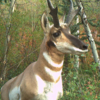





































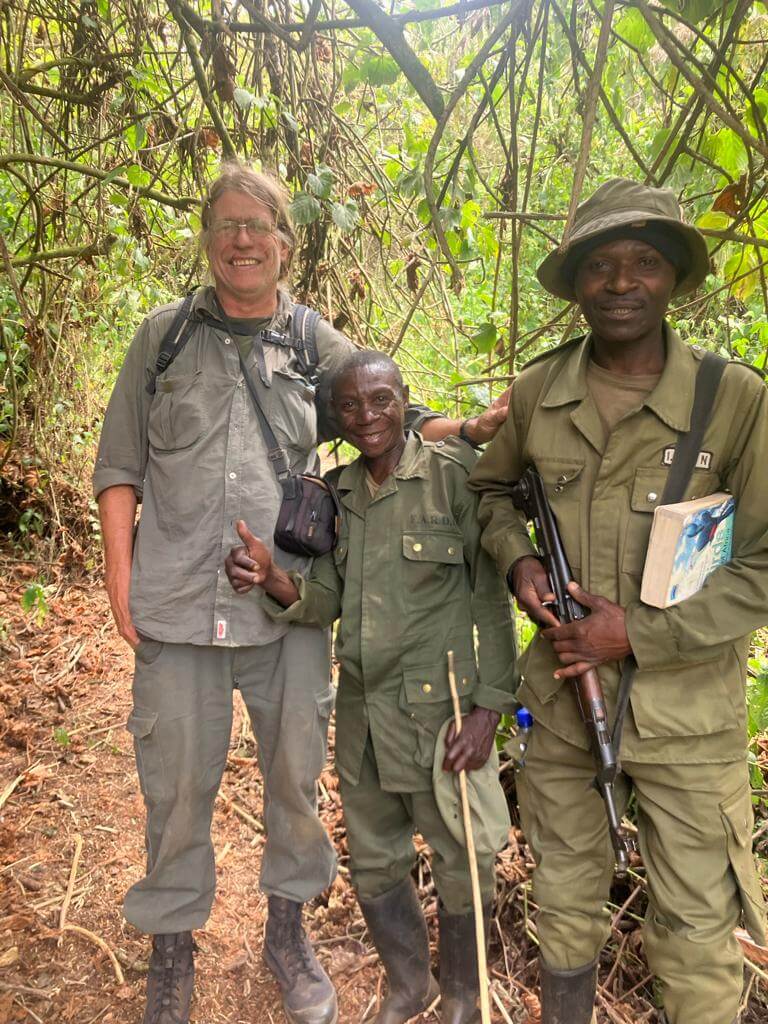















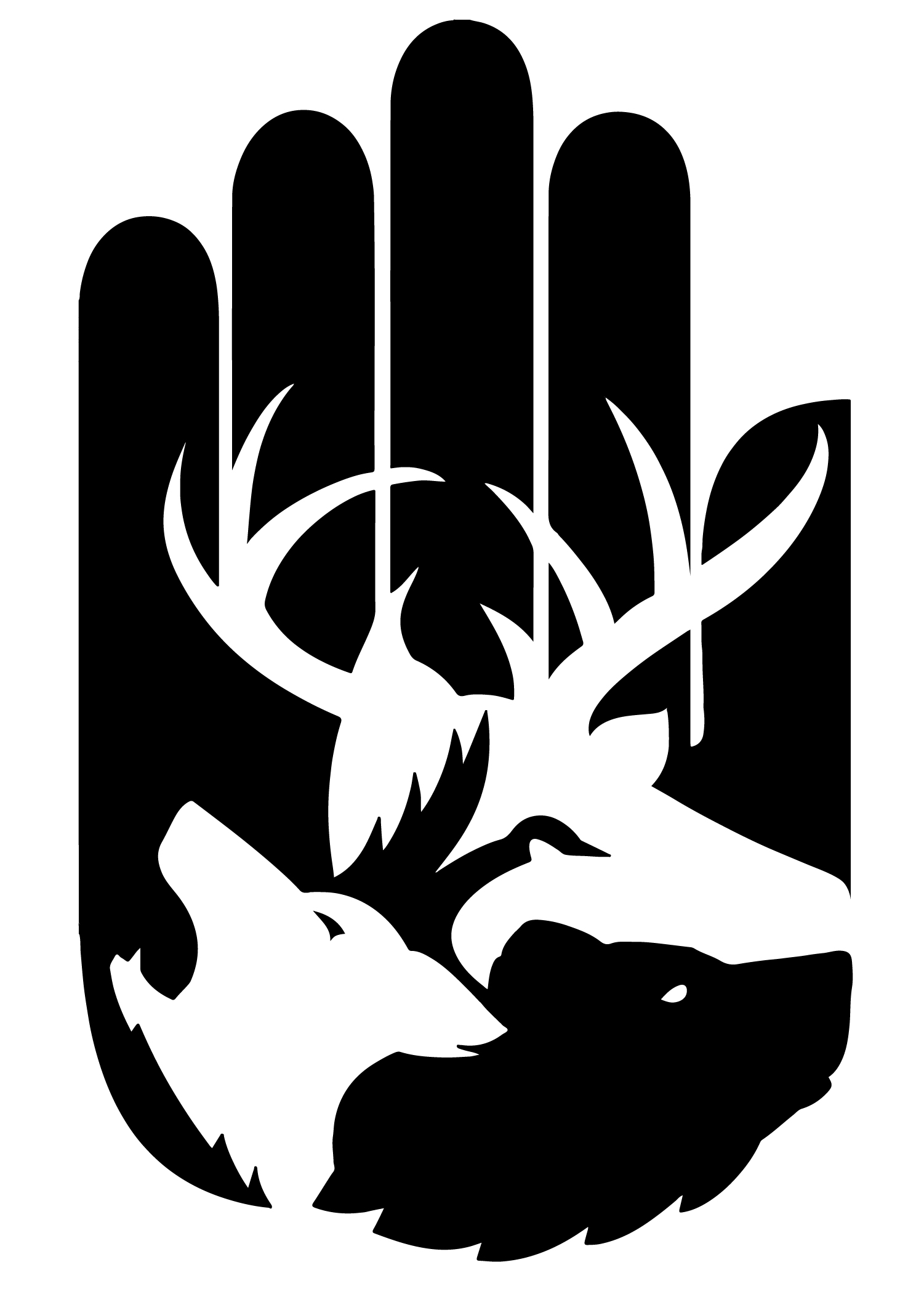


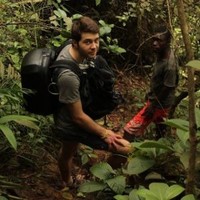





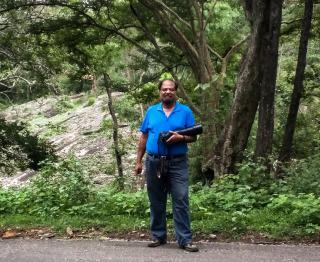



30 August 2022 6:24pm